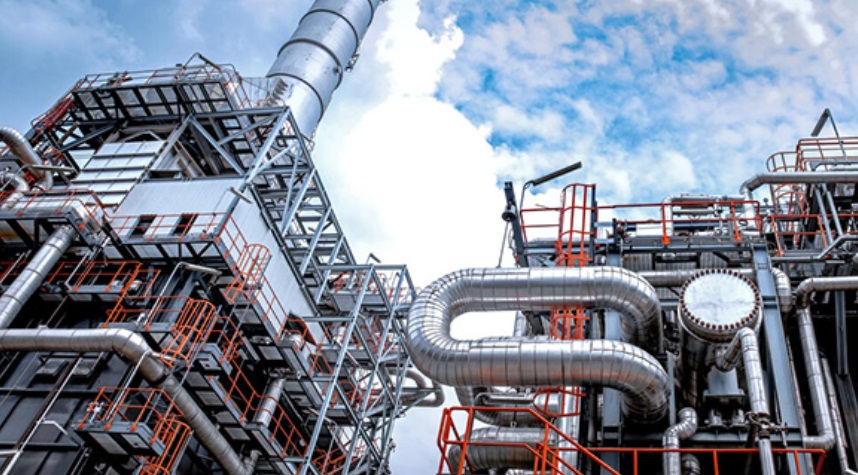Significance of Piping Design in the Oil and Gas Industry
- Shahab Farzin
- Dec 27, 2024
- 4 min read

An essential component of global energy production, the oil and gas industry propels economies and enables progress. Pipeline procedure is one of the many factors of this business that is vital to the safe, effective, and dependable flow of gas, oil, and other liquids. A well-designed piping design is necessary for smooth functions from upward explorations to downstream refining.
The importance of oil and gas piping design and how it promotes effective operations in the oil and gas sector will be discussed in this blog.
Making Certain Safety and Dependability
In the oil and gas sector, where there is a considerable risk of leaks, fires, or explosions, safety is a given. Essential elements like material force, temperature tolerances, and pressure ratings are taken into consideration during the proper technique of pipes to ensure that they can endure extreme operating possibilities.
Following industry norms, like those specified by the American Petroleum Institute (API) or the American Society of Mechanical Engineers (ASME), is also crucial to fulfilling safety regulations. To identify potential flaws and incorporate safety features like expansion joints, relief valves, and secure connections, competent designers employ state-of-the-art analysis techniques.
By putting safety first during the design stage, businesses protect their employees, avoid expensive mishaps, and keep the environment protected from dangerous spills.
Improving the Efficiency of Operations
The oil and gas sector places a high premium on efficiency, and the foundation of efficient operations is piping design. Pipelines that are precisely engineered minimize energy losses, guarantee steady flow rates and maximize the transportation of materials.
With the use of sophisticated engineering tools and software, including 3D modeling and simulation, engineers can create layouts that minimize pressure drops, avoid bottlenecks, and reduce friction. All of these elements work together to increase output and lower energy use, which saves a lot of money.
For instance, a badly built system may result in higher pumping power needs or more frequent shutdowns because of inefficiency. By spending money on professional piping design services, businesses can steer clear of these problems and increase operational productivity.
Adaptability and Expandability
As the needs for energy production, distribution, and storage change, the oil and gas industry is dynamic. A scalable and adaptable piping design guarantees that systems can change to meet evolving needs without causing major issues.
For instance, pipelines that are built with future expansions in mind can integrate new technology, handle more capacity, or change operating settings as necessary. Businesses hoping to maintain their competitiveness in the quickly evolving energy sector must possess this flexibility.
Affordable Options
In the oil and gas sector, cost control is the primary consideration in all decisions, and piping design is essential to keeping costs under control. In addition to preventing construction errors and reducing material waste, proper design also removes the need for costly retrofits.
Comprehensive isometric plans and drawings, for example, guarantee that installation crews have a clear road map and reduce construction errors. Whether the components are carbon steel, stainless steel, or composites, durability and budgetary constraints are also carefully considered.
Financing in high-quality plumbing technique will pay off in the long run by reducing maintenance expenses, reducing downtime, and improving system lifespans.
Decreasing Maintenance Costs
One of the biggest concerns in the oil and gas sector is unplanned downtime, which can result in large economic losses. By predicting wear and tear, environmental characteristics, and managing stressors, robust piping design reduces the chance of breakdowns.
With a well-designed system, engineers can swiftly detect and fix problems without interfering with operations, making routine maintenance simpler and more affordable. This proactive strategy improves overall system reliability, lowers expenses, and saves time.
Endorsing Ecological Stability
As concerns about the environment grow, pressure is mounting on the oil and gas industry to reduce its ecological impact. The design of pipes encourages sustainability by minimizing leaks, pollution, and energy waste.
Precision engineering, corrosion-resistant materials, and advanced sealing technologies guarantee that pipelines function effectively while adhering to strict environmental standards. To further improve sustainability efforts, creative designs can also include energy recovery and reuse devices like heat exchangers and insulated pipelines.
Companies can not only comply with regulations but also show their dedication to corporate social responsibility and improve their standing with stakeholders by implementing environmentally friendly piping systems.
The Function of Skilled Pipe Designers
Every effective piping system is the result of a group of knowledgeable engineers and designers who are aware of the complexities of the oil and gas sector. Businesses such as Piping Consulting Group are experts in offering customized solutions that meet each client's needs.
Using state-of-the-art instruments, industry norms, and years of expertise, these professionals develop systems that satisfy the strictest requirements for sustainability, safety, and efficiency from conception to deployment.
Last Remarks
Pipeline procedure is a strategic edge in the oil and gas sector, not just a technical essential. While responding to the ever-changing needs of the industry, it preserves operational significance, puts safety first, controls expenses, and facilitates environmental sustainability.
Collaborating with a piping design specialist is an essential step for businesses looking to improve their operations. The expert industrial piping design team is committed to providing creative, dependable, and long-lasting solutions that are suited to the particular difficulties faced by the oil and gas sector.
Get in touch with us right now to begin improving your infrastructure and allow us to assist you in creating the energy of the future.



Comentários